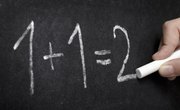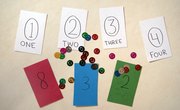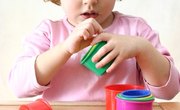Sequencing is an important skill required in all areas of learning at every age and grade level. Regular practice with sequencing in a variety of contexts can help children succeed in language arts, math, music and reading comprehension. Sequencing is also central to life skills such as time management and setting priorities. Help your students become better learners by making sequence games and activities a regular part of your classroom routine. The basics of many sequence activities can be modified to suit a wide range of ages and abilities.
Flashback
Tell your students a story (or play a segment of a radio or video program). To make this activity more difficult, choose a story that begins in the middle or one that consists of flashbacks, so that the events of the story are not told in chronological order. After the story, ask students to reconstruct the order of events. This activity can be an oral group exercise or a written individual one.
Retelling
Give students some time to think about the events of a particular day. Give them a graphic organizer with five or six large boxes to draw or write in. Direct students to describe (in pictures or words) five or six different events that occurred on that day. Tell students to describe these events in random order in preparation for the next part of the activity. After students complete their descriptions, ask them to pair up and switch papers. Each student will then try to guess the correct order of the other's activities. If time allows, ask for volunteers to tell their partner's story. This exercise works well for young children and for foreign language or ESL students.
Story Pieces
This game will get your students out of their chairs. It may even played outdoors on a nice day. Prepare a set of cards (enough to give each student one card). On the cards, write a portion of a short story or parable. Pass out one card to each student. Ask students to arrange themselves in a circle so that the pieces of the story are in order. Have the students read the story out loud and listen to see if their sequencing is correct. If you have a large class you may want to color-code the cards so that students with segments from the beginning or middle or end can easily find each other and get started. Then each group can link with the next group. If done correctly, the story will be in order. If someone thinks a mistake has been made, have the students switch places and read it again, either from the beginning or from a few segments back. If you have more cards than students, pull out the first few cards and read the beginning of the story to the whole group before they proceed with the sequencing exercise.
Fill the Gaps
Provide a story, set of instructions or math problem with segments missing. Ask students to fill in the gaps with items that make sense. To make this a more active game, provide half the class with various handouts containing missing information. Provide the rest of the class with those missing pieces of information. Challenge students to pair up correctly.
Origami
Origami, the Japanese art of paper folding, is a great way to teach sequencing without relying on the traditional verbal and mathematical skills that dominate most classrooms. To create origami, students have to process directions and proceed according to a specific sequence.
Related Articles
Writer Bio
Linda Basilicato has been writing food and lifestyle articles since 2005 for newspapers and online publications such as eHow.com. She graduated magna cum laude from Stony Brook University in New York and also holds a Master of Arts in philosophy from the University of Montana.











